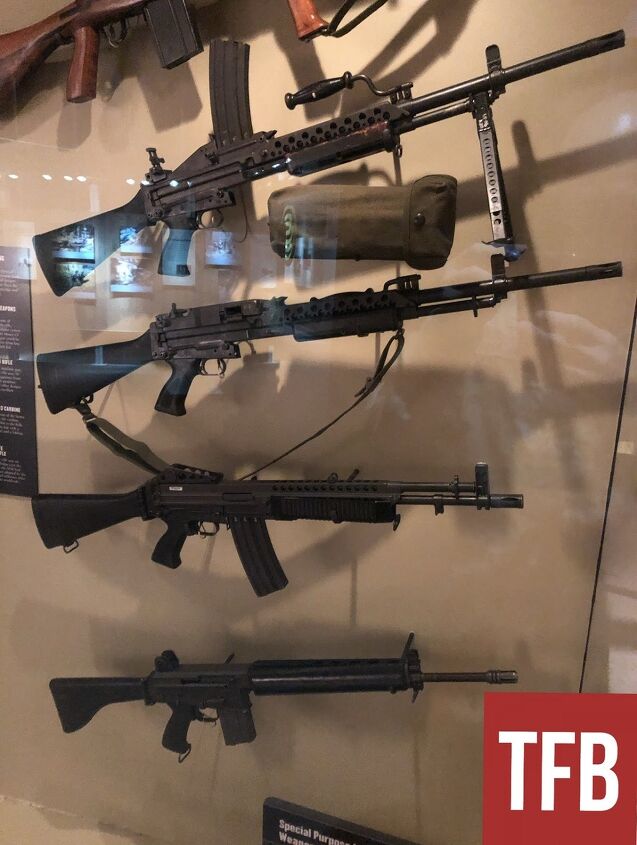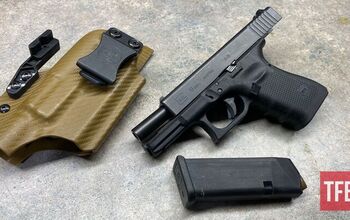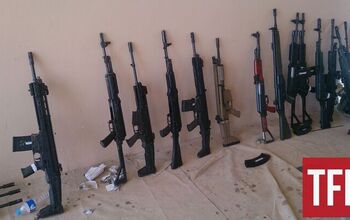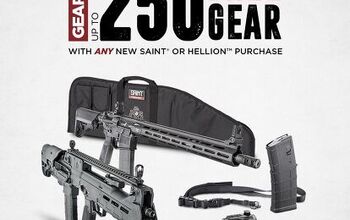The Stoner 63 Modular Weapon System

My first encounter with the Stoner 63 was at the Infantry Museum in Fort Benning, Georgia, after completing Infantry One Station Unit Training. The exhibit showcased the system's unique and versatile configurations, with the carbine and belt-fed machine gun standing out. This was a testament to the Stoner 63's innovative and adaptable design, making it a fascinating modular weapon system.
Conceived in the early 1960s by the legendary U.S. arms designer Eugene Stoner, the Stoner 63 stands as one of the most groundbreaking firearm designs in history. Stoner's collaboration with Cadillac-Gauge to create his iconic modular weapon system predates the surge in weapon modularity during the Global War On Terror, establishing it as a pioneering force in the evolution of firearms.
The complete weapon system can be configured for various missions, showcasing its adaptability and versatility. Whether it's a rifle, carbine, Bren-type squad automatic weapon, or light machine gun, the Stoner 63 is ready for the task. This adaptability was further demonstrated in the shift from the 7.62x51 NATO cartridge to the more widely adopted 5.56x45 cartridge, a natural progression as the M14 was nearing the end of its service as the US military's primary weapon.
Weight is a crucial consideration for any weapon. The Stoner 63 system offers different configurations with varying weights: the carbine at 7.75 lbs. (3.52 kg), the rifle at 7.90 lbs. (3.58 kg), and the light machine gun at 11.68 lbs. (5.30 kg). The use of short barrel commando barrels can further reduce these weights. The light machine gun configuration, at 11.68 lbs. (5.29 kg), presents a desirable lightweight option for any 5.56 LMG. Even in the context of today's modern weapons, the Stoner system's weight remains a remarkable feat of engineering.
The Stoner 63 features a universal stamped receiver and a universal bolt assembly, allowing it to be configured in any of its variants. It operates using a gas-operated, long-stroke piston system; the piston assembly uses a tungsten weight as an anti-bounce device. The bolt design is multi-lug rotating, with a notably large cut for the extractor. The bolt assembly includes a tail section that can be rotated 180 degrees for the rifle and light machine gun configurations. This gives the option of using either a spring-loaded firing pin for closed bolt operation or a fixed firing pin for open bolt operation in the light machine gun.
The charging handle connects to a stud on the gas piston carrier extension, depending on the configuration. The extended charging handle protrudes through the handguard in the light machine gun configuration. In contrast, the assault rifle configuration has a shorter handle on top of the weapon. Earlier versions of the charging handle extended past the handguard and were positioned on the side of the gun, mounted on a stud on the receiver. However, this design was not suitable for light machine configurations.
The Stoner rifle was initially issued on a trial basis to the US Marine Corps and the US Navy Seals, which operated in Vietnam in Southeast Asia. Production of the Stoner ended in 1971, with an estimated 4,000 units manufactured—2,400 of which were light machine guns intended for the US Navy. The weapon system was refined based on feedback from these units, particularly the Navy Seals. It remained in service with the Navy Seals until the 1980s.
In 1966, the Stoner was upgraded to meet user requirements better, resulting in the creation of the Stoner 63A, which the US Navy Seals adopted under the designation MK23 Mod.0. One of the most noticeable changes was the repositioning of the charging handle, which was placed under the handguard for the light machine gun role and directly on top for the assault rifle role. The side charging handle actuator was eliminated when the system transitioned from the left to right-side feed in the light machine gun configuration.
The belt feed was changed from left to right-side feed while retaining left-side ejection. The safety for the fire control group was integrated into the selector; earlier models featured an M1 Garand or M14 type safety lever inside the trigger guard. Another modification involved changing the gas tube to stainless steel, akin to the gas cylinder utilized in the M1 Garand.
In the belt-fed machine gun configuration, which used left-side feed and left-side ejection, a "spin-back" malfunction could cause a spent casing to bounce off the belt mounting bracket and into the ejection port. This led to the switch to right-side feed, resulting in a more conventional manual of arms for the 63A and the MK23 Mod.0, which the Navy Seals adopted during the Vietnam War.
The Stoner weapon systems feature a high rate of fire of 700 rounds per minute, which places them lower on the recoil curve. These systems exhibit remarkably light recoil, nearly eliminating recoil in the assault rifle configuration. This characteristic likely contributed to Stoner’s later development of the ARES light machine gun and the constant recoil system used in the Ultimax 100 series of weapons for Singapore.
It is worth noting that this was the first belt-fed 5.56x45 light machine gun, and its early development had no equivalent for disintegrating links. To address this, the Stoner S-63 link was developed; however, it is not compatible with the now-standard M-27 5.56 link, although conversions to enable M-27 usage became available later. The spacing between cartridges in the S-63 link is noticeably closer than that of the M-27 link. As the only 5.56 light machine gun using the S-63 link, operators had to collect their spent links whenever possible. There are reports of using rain ponchos in the early days to catch spent links during ambushes. These links were less common than the M-13 links used with the M-60 machine gun during the conflict.
While the ability to configure a weapon for different roles may not be crucial, from a manufacturing perspective, using one base receiver that can be adapted into either a dedicated machine gun or a dedicated assault rifle offers significant advantages. This approach reduces manufacturing time and subsequently lowers production costs.
The lineage of the Stoner LMG continued at Knights Armament when Eugene Stoner began working there in 1990. This evolution resulted in the KAC Stoner LMG, which further developed into the KAC LAMG (Light Assault Machine Gun). The KAC AMG, or Assault Machine Gun, in 7.62x51 caliber, shows significant promise as a squad automatic weapon, maintaining the lineage of the original Stoner design in .30 caliber.

Lynndon Schooler is an open-source weapons intelligence professional with a background as an infantryman in the US Army. His experience includes working as a gunsmith and production manager in firearm manufacturing, as well as serving as an armorer, consultant, and instructor in nonstandard weapons. His articles have been published in Small Arms Review and the Small Arms Defence Journal. https://www.instagram.com/lynndons
More by Lynndon Schooler
















![[SHOT 2025] Franklin Armory Binary SCAR Trigger, F22 and OPS-11](https://cdn-fastly.thefirearmblog.com/media/2025/01/24/13081/shot-2025-franklin-armory-binary-scar-trigger-f22-and-ops-11.jpg?size=350x220)




![[SHOT 2025] New Rifles from Diamondback](https://cdn-fastly.thefirearmblog.com/media/2025/01/22/05031/shot-2025-new-rifles-from-diamondback.jpg?size=350x220)



Comments
Join the conversation
You are incorrect in that the later version of the Stoner 63 aka the 63A used a safety like the M1/M14. Whom ever has the Stoner 63 you shot in the pictures has a gun that has a mixture of parts, some 63 and other 63A. Here is a picture of my gun properly set up for a 63A gun in belt fed configuration.
The system the USMC wanted, but the air force had to screw it up and buy the m16. We had a class on this system at IOC. So innovative and years ahead of its time.